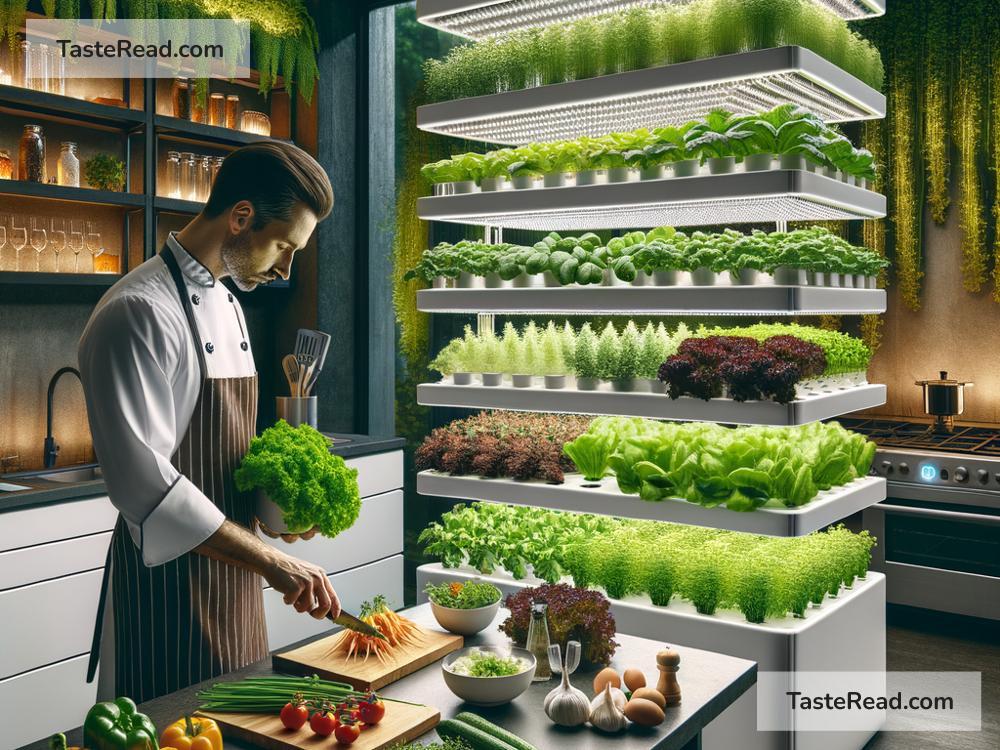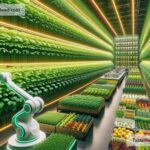The Future of Food and Sustainable Technology: A Friendly Look Ahead
We all need food to live. It’s something we depend on every day. But as the world’s population grows, how we produce and consume food is changing. At the same time, many of our current methods of farming, fishing, and food production are harming the planet. This has led scientists, farmers, and innovators to search for better, more sustainable ways to feed everyone while protecting the Earth.
So, what does the future of food look like? And how can technology help us make it greener and fairer? Let’s explore some exciting possibilities!
Why We Need to Rethink Food Production
Right now, our food systems are struggling to keep up with demand. By 2050, the world’s population is expected to reach 10 billion, meaning we’ll need to produce much more food. But here’s the problem: traditional farming methods take up a lot of land, use massive amounts of water, and contribute to climate change by releasing greenhouse gases into the atmosphere.
For example, raising livestock (like cows, pigs, and chickens) for meat requires vast amounts of land, food, and water. It also produces methane, a powerful greenhouse gas that contributes to global warming. Similarly, fishing practices in many parts of the world deplete fish populations and harm fragile ocean ecosystems. If we keep using these unsustainable methods, we’ll face food shortages and environmental damage that could hurt everyone.
That’s where new technologies and sustainable practices step in. These innovations are helping us produce food more efficiently and with less harm to the planet.
Exciting Sustainable Food Technologies
Let’s take a closer look at some of the futuristic, earth-friendly ideas changing the way we grow, make, and eat food.
1. Vertical Farming
Traditional farming uses large areas of land, which can lead to deforestation and habitat destruction. Vertical farming is an alternative that grows crops in stacked layers in indoor spaces. Because it uses less land and water, it’s much better for the environment.
Vertical farms often use LED lights to mimic sunlight and advanced hydroponic or aeroponic systems to feed plants with nutrient-rich solutions instead of soil. These farms can be built in cities, reducing the distance food travels to reach people and cutting down on carbon emissions. Fresh vegetables grown in vertical farms might soon become a common sight in urban grocery stores.
2. Lab-Grown Meat
Meat is a staple in many diets, but producing it the traditional way takes a toll on the planet. Lab-grown meat, also known as cultivated meat, offers a promising alternative. Instead of raising and slaughtering animals, scientists grow meat from animal cells in a controlled environment.
This process uses much less land, water, and energy. Plus, it avoids the ethical concerns tied to animal farming. Many companies are working to make lab-grown meat affordable and tasty. In the future, we could enjoy burgers, nuggets, and steaks that come straight from these futuristic labs.
3. Plant-Based Proteins
If lab-grown meat isn’t your style, how about burgers made entirely from plants? Foods like Impossible Burgers and Beyond Meat are designed to look, taste, and even smell like real meat, but they’re made from ingredients like peas, soy, and beans.
Plant-based proteins are already gaining popularity worldwide. They use far fewer resources to produce than traditional meat, making them a sustainable option for feeding the planet. As technology improves, these products will become even tastier and more accessible.
4. Food Waste Reduction Technologies
Did you know that about one-third of all food produced globally goes to waste? This wastes resources like water and energy, and it also generates greenhouse gases when the food rots in landfills.
Innovators are tackling this problem with smart solutions. For example, apps can help connect grocery stores and restaurants with local charities to donate unused food instead of throwing it away. Other technologies use artificial intelligence to track food spoilage and help farmers, suppliers, and stores reduce waste.
5. Precision Agriculture
Precision agriculture uses advanced tools like drones, GPS, and sensors to help farmers grow crops more efficiently. These technologies help farmers track things like soil health, water levels, and crop growth, allowing them to make better decisions about planting and harvesting.
By minimizing the use of water, fertilizer, and pesticides, precision agriculture reduces environmental impact and boosts food production. In the future, even small-scale farms could benefit from these high-tech tools.
What Can We Do?
As exciting as these technologies are, they won’t work without support from all of us. Governments, businesses, and individuals need to prioritize sustainable food choices to make the transition easier. Here’s how you can help:
- Eat more plant-based foods. Choosing vegetables, grains, and legumes instead of meat helps lower your environmental footprint.
- Reduce food waste. Plan meals carefully, store food properly, and compost leftovers when possible.
- Try new foods. Be open to lab-grown meat, plant-based proteins, or dishes made using sustainable methods—they might surprise you!
A Tasty, Sustainable Future
The future of food is filled with possibilities. With vertical farms growing fresh produce in cities, lab-grown meat filling our plates, and smart technology helping farmers use resources wisely, we can make sure everyone has enough to eat—without harming the planet.
It’s up to us to embrace these changes and invest in a brighter, greener future. Sustainable food isn’t just good for the Earth; it’s good for us, too. So, let’s work together to build a world where every meal is healthy, delicious, and environmentally friendly.
Who knows? The way we eat in 20 or 30 years might be completely different—and that could be a very good thing.


